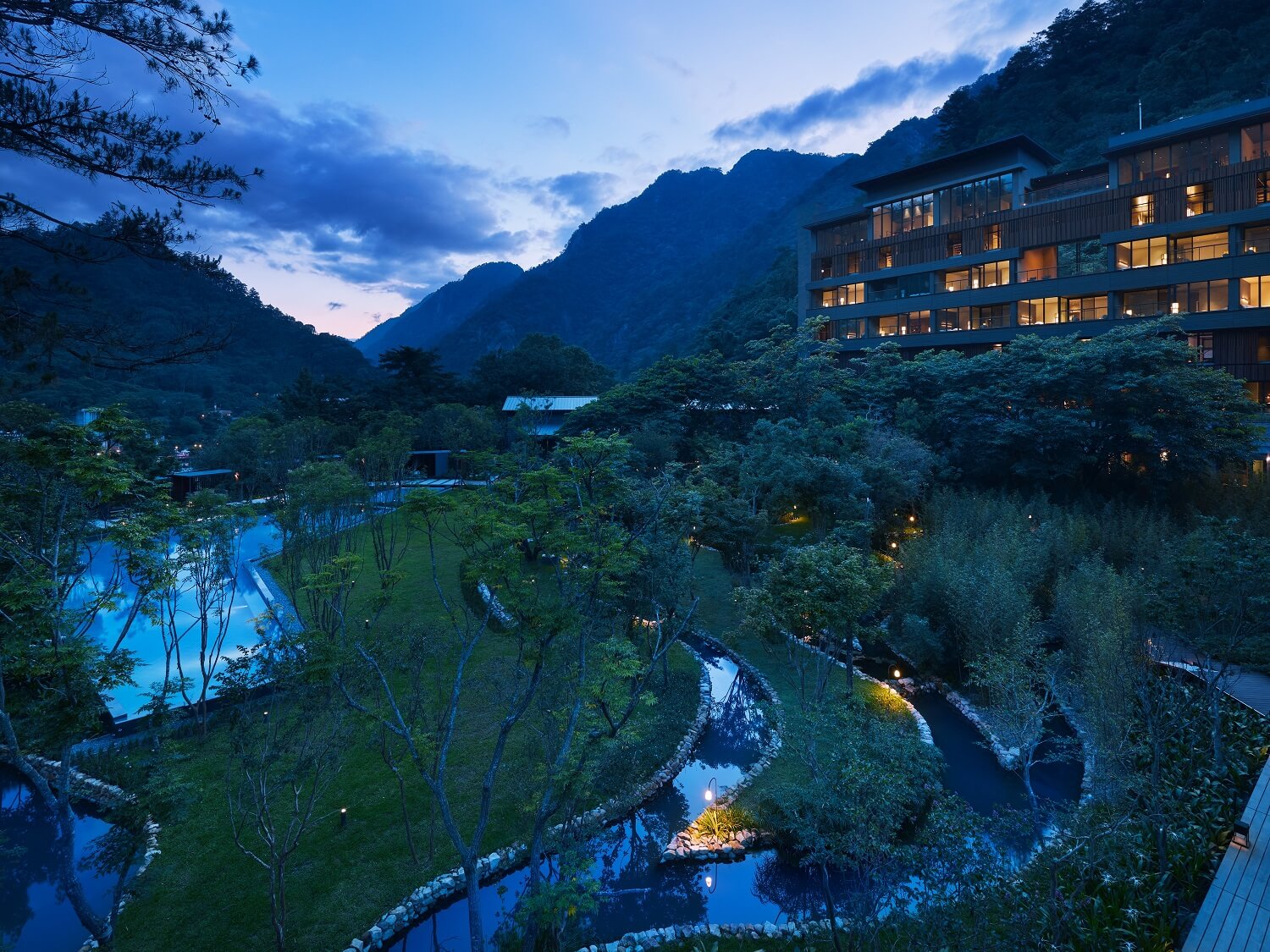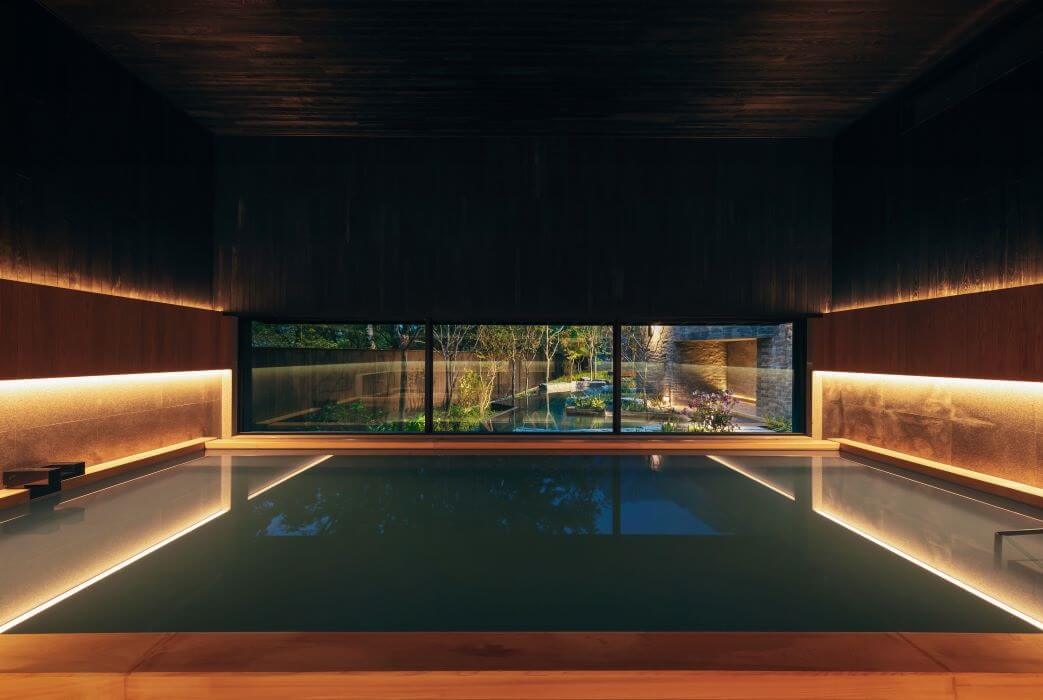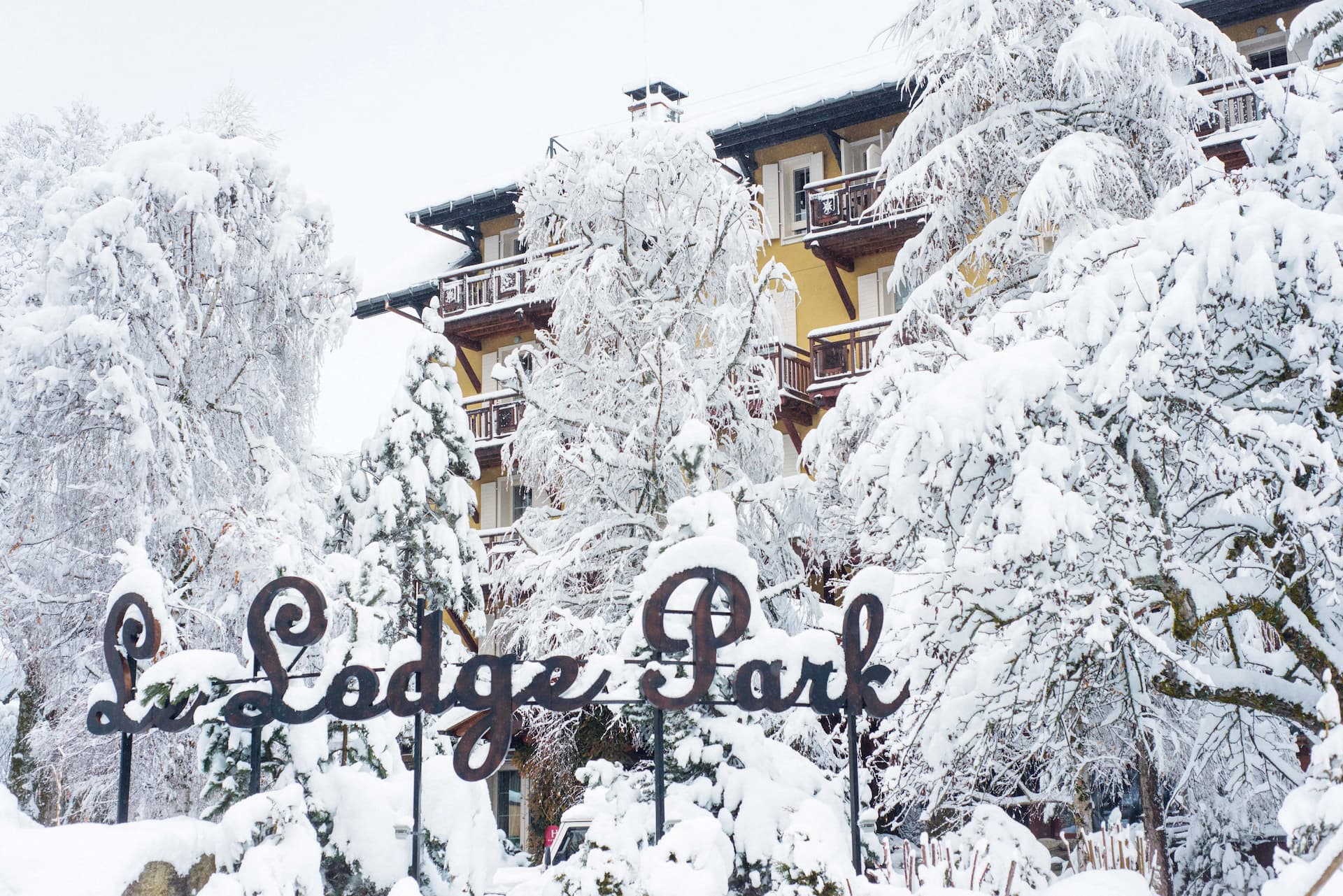
Nothing but a tiny cotton towel protects my modesty at the steaming pool I’m about to enter. I may be in Taiwan, where hot-spring outings are usually swimwear-friendly family affairs, but here in the baths of Hoshinoya Guguan, tradition dictates I onsen the Japanese way: in my birthday suit.
My initial awkwardness melts away the moment I submerge into the cypress-fringed outdoor bath. Fed by streams flowing down the craggy peak of Xueshan, East Asia’s second-highest mountain, its water is slightly alkaline and on the pleasant side of piping hot, making it the perfect introductory onsen for a novice like me.
Opened in June, Hoshinoya Guguan (hoshinoya.com; doubles from NT$7,560) is the luxury resort chain’s first foray into Taiwan, and only its second resort outside of Japan, where founder Kuniji Hoshino opened his first ryokan in Nagano Prefecture in 1914. Its setting on a forested plateau in Guguan, a tiny hot-spring enclave in the island’s mountainous heartland 90 minutes west of Taichung, taps directly into the liquid treasure.

“The qi is particularly good here,” says the brand’s global wellness manager, Keiko Watanabe, as we stroll through the resort’s verdant gardens. “The wind, the water —everything flows so naturally.” Qi, the Chinese concept of energy flow, informs both the resort’s wellness program and its design— from the garden, where wooden pathways zigzag through swaying bamboo forest and babbling canals swirl around Chinese firs and Formosan gum trees (some of which date back to Japanese colonial times), to the kaze no ma, a communal lounge on the fifth floor, optimally positioned to catch the sunlight and the crisp mountain air.
My room, too, is designed with qi in mind, laid out over two floors, with a bedroom and lounge on the bottom and an onsen area on top. The focal point is an indoor-outdoor stone bath endlessly fed by Xueshan’s hot springs, and refreshed by a forest breeze. In a palette of muted greys and browns, interiors reflect the clean, functional shapes characteristic of Japanese Zen design. Every piece of furniture (comfy futons and low-slung daybeds among them) faces floor-to- ceiling windows that frame valley views in countless shades of green.

As the sun begins to set and the humming of cicadas fills the air, I set off to the resort’s restaurant, following twists and turns through the garden, past a shimmering pool and gazebos lit up with lanterns resembling fireflies. The dining room features both Western-style seating and Japanese-style sunken dining booths, horigotatsu, the latter offering the best views of the garden. I opt for the eight-course kaiseki meal, a delicate pairing of Taiwanese bounty and Japanese cooking techniques, dished up by executive chef Shunsuke Fujii on a plethora of tiny colorful ceramics. Highlights include sea bream sashimi with kumquat-infused salt, and grilled Taiwanese grouper marinated in soy sauce, mirin and sake.
The following day I loll around the resort’s pool and follow an in-again, out-again routine at my private onsen. No tiny towels and curious glances here. Come nightfall, I slip into a navy-colored yukata and traditional wooden geta shoes to meet Ms. Watanabe again —this time for an onsen masterclass in the spa’s lobby lounge. Turns out that my method of hastily washing myself then soaking in hot water until my fingertips turn into raisins is all wrong. She tells me not to just jump straight in, but to first splash myself 10 to 20 times to let my skin react to the minerals. She also teaches me gentle stretches and breathwork for when I’m submerged. “Bathing is a kind of exercise,” she explains. “The warm water can work wonders on your skin and muscles.”

The masterclass is followed by a massage at the spa, where two of the four shoji paper–screened treatment rooms come with private onsen pools facing a mountainscape that’s now shrouded in clouds. I don’t tell my masseuse about my hike—or attempted hike—along the 90-minute uphill Shao Lai hiking trail I’d tried earlier that day, but my weary calves give it away. It’s nothing she can’t fix with a combination of Chinese and European massage techniques.
As the weekend comes to a close, I ignore Ms. Watanabe’s teachings and take one last way-too-long soak on my balcony. Frets of work and deadlines evaporate with every billow of steam. I’ve spent numerous weekends at my in-laws’ summer home not far from here, quietly pleading with my wife if we could please go home already. This time, however, I dread the thought of heading back to the city.
Features of HOSHINOYA Guguan
- Each room has a semi-open-air bath, and guests can enjoy water flowing directly from the natural source of the hot spring at any time and as much as they want.
- The abundantly flowing waters of the hot spring and the natural spring water of the Taiwan Central Mountain Range are utilized in the design of the public spaces.
- The hotel has a choice of dishes guests will not tire of even during a long stay. They will be fascinated by food anew through the combination of ingredients used in Taiwan and cooking techniques from Japanese cuisine.
- Guguan is a hot spring located at the foot of the Taiwan Central Mountain Range, which consists of mountains at a height of about 3000 meters. A hot spring flows out in the valley created by the Dajia River, which runs through the central part of Taiwan, and lively nature remains there even now.

